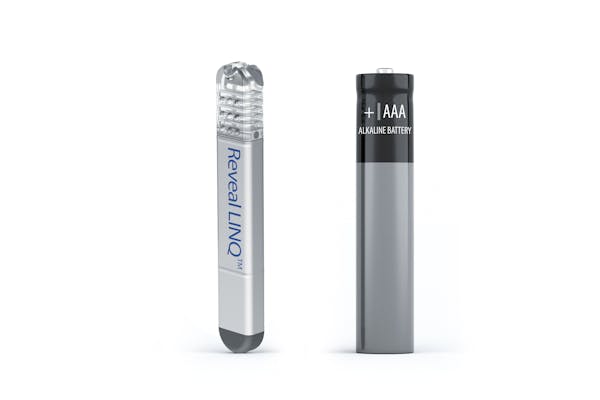Medtronic is working hard to win the race to tiny.
The world's largest medical technology company announced Thursday the first U.S. implant of its Micra Transcatheter Pacing System, a vitamin-sized pacemaker one-tenth the size of a conventional device and so small that it fits inside the human heart.
The news comes one day after the Fridley-based company announced U.S. and European regulatory approval of an implantable cardiac monitor that is smaller than a AAA battery. But the company does not have the micro-tech arena to itself. A little more than two weeks ago, St. Jude Medical Inc. of Little Canada launched the U.S. clinical trial of its own mini-pacemaker, the Nanostim. That device, about the size of a AAA battery, also is anchored inside the heart.
Pat Mackin, president of Medtronic's cardiac rhythm disease management business and senior vice president, said: "Micra TPS is an example of the significant investment we have made in disruptive technology, specifically the miniaturization of implantable cardiac devices. Less invasive, miniature device technologies show strong promise in improving patient outcomes and implant procedure efficiency."
Thom Gunderson, senior analyst with Piper Jaffray Co., said medical technology companies have battled for years to make their devices ever smaller.
"I always suspected that smaller wouldn't get you market share, and I was always wrong. This is a huge leap into much smaller sizes," he said. "What are the themes today? There are two: Save the hospital money, offering as good or better products, and expand globally. This [pacemaker] will be put in with fewer complications and save hospitalization costs. And, on part two, it may mean that more doctors around the world can implant them. That could lead to greater international sales."
Medtronic's device is about 30 percent smaller than St. Jude's, officials said. It was implanted at NYU Langone Medical Center in New York on Thursday as part of a Medtronic global clinical trial. Dr. Larry Chinitz, director of the Heart Rhythm Center at Lagone, performed the procedure.
Medtronic Inc. officials said it will likely be a few more years before the tiny pacemaker will be commercially available in the United States.
Like the St. Jude device, the Micra has no leads, wires that connect conventional pacemakers to the heart. Leads are the most vulnerable component of conventional pacemakers and defibrillators, as the thin wires can fracture, pull loose or short-circuit over the years. Instead, the Micra is attached to the interior of the heart with small tines. It delivers an electrical pulse to the heart through a small electrode at the end of the device. Most defibrillators and pacemakers have had problems with leads over the years.
Also, unlike a traditional pacemaker, the device is delivered to the heart via a catheter. Doctors do not have to surgically create a small pocket under the skin to hold the device. Medtronic says this reduces the risk of infection and other complications.
"With its small size and minimally invasive procedure, this technology represents the future of pacing," Chinitz said in a statement. "Eliminating the need for a lead and pocket has the potential to reduce complications and recovery times compared to traditional pacemaker implants, which would be a major benefit to patients."
Pacemakers treat bradycardia, a slow or irregular heart rhythm of usually fewer than 60 beats per minute. At such a slow rate, the heart is unable to pump enough oxygen-rich blood to the body during normal activity or exercise, causing dizziness, fatigue, shortness of breath or fainting spells. Pacemakers help to restore the heart's normal rhythm, relieving symptoms by sending electrical impulses to the heart to increase the heart rate.
More than 4 million people worldwide have an implanted pacemaker or other cardiac rhythm management device, and an additional 700,000 patients receive the devices each year.
Both Nanostim and Micra provide what is called "single chamber pacing" and would not be appropriate for all patients who need a pacemaker. While they can automatically adjust to patient activity levels, they treat the rhythm of only the right ventricle of the heart. Many patients need dual-chamber pacing to improve their heart's efficiency.
Still, tiny pacemakers with long battery life — the Micra battery is projected to last 10 years at 100 percent pacing, the Nanostim 9 years — could make for an attractive alternative for many patients.
Younger patients wishing to live a more robust lifestyle may be especially drawn to the devices because they are placed inside the heart itself and may not carry the same prohibitions against physical activity that could jar conventional pacemakers. There also would be no visible lump or scar.
James Walsh • 612-673-7428
